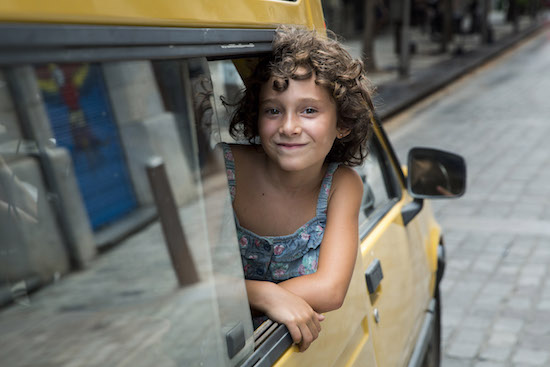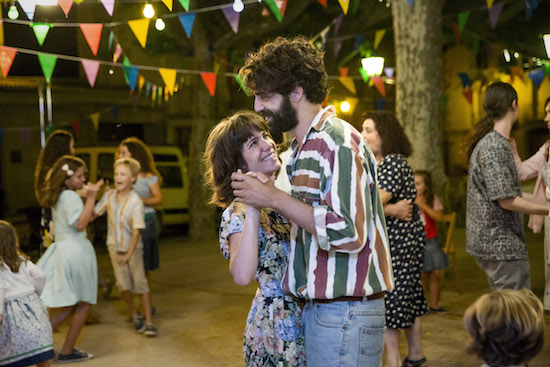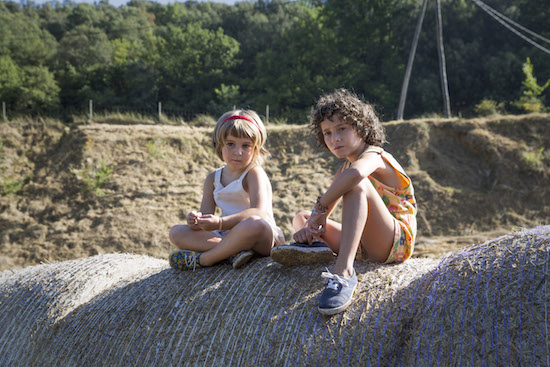Film: One Transformative Summer
In Summer 1993, the lovely and evocative feature film debut by Catalan filmmaker Carla Simón, a six-year-old girl slowly comes to terms with grief and a new way of life. The film’s straightforward observational style conveys complex emotions without veering into sentimentality, while the orphaned Frida (played with gravity and charisma by Laia Artigas) is not portrayed as pathetic, but realistically moody, alternating between mischievous and melancholy.
The autobiographical story (Simón lost her own parents when she was a child) begins with a busy scene of adults packing boxes around the small, watchful figure of Frida, who is being sent from her grandparents’ Barcelona home to live with her aunt and uncle in the countryside.
We discover this rustic new home along with Frida, as the camera trails her explorations around the sprawling property where crowing roosters, aggressive hens and farm life in general all seem very foreign. Esteve (David Verdaguer), the brother of Frida’s recently deceased mother, and his wife Marga (Bruna Cusi) are young and fairly laid-back, but also kind and attentive. Frida immediately befriends their daughter Anna (Paula Robles), introducing her little cousin to various toys with the standard, older-kid “hands off” proviso.
The film’s overall tone is low-key and intimate, with many close-ups of Frida’s small, pensive face. She expresses her sense of displacement in small acts of rebellion and leads the ever-willing Anna through various games, including an amusing session of dress-up. Both girls, especially the big-eyed Anna, are endearing but never saccharine; Simón allows her young actors to act and play naturalistically. Though the movie has no soundtrack, Esteve’s jazz is often playing in the background, a cool counterpart to the sunny, bucolic setting.
Marga brings Frida to the doctor for medical tests, and there are allusions to the girl’s “background.” Later as she makes friends in a playground and cuts her knee playing tag, one mother’s frantic warning hints at the nature of Frida’s mother’s illness. (It’s reminder that 1993 was, in some ways, truly a different era.)
When the girl’s grandparents visit from Barcelona, they coddle her, and naturally she basks in their attention. This frustrates Marga, who has started to believe that Frida is a bad influence on her daughter. Aside from the fact that Anna has begun talking back to her mother, Frida’s recklessness has put her cousin in dangerous situations. These tense scenarios are balanced by playful scenes of affection between Frida and her aunt and uncle; there is also a joyful visit to a local festival, which includes dancing and costumed figures with large papier-maché heads.
Summer 1993 is full of small touching moments, such as Frida’s repeated visits to a secluded grotto of the Virgin Mary in the woods, where she tries to communicate with her mother. It’s really only during these times that she seems able to express her grief.
As the days pass, Frida’s adjustment to her new surroundings doesn’t necessarily get easier and at one point she attempts to run away. Eventually, though, she feels safe enough to ask the questions that finally allow her to release her emotions.
Simón has made a finely-wrought film of great depth and compassion. With its unforced pace and wistful air, Summer 1993 weaves a potent spell that lingers some time after it ends.
Summer 1993 opens on Friday at the Film Society of Lincoln Center’s Elinor Bunin Munroe Film Center.
—Marina Zogbi




